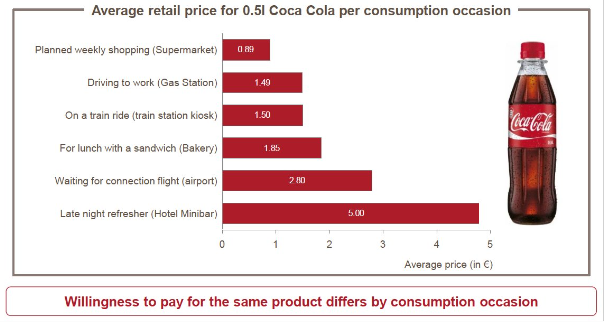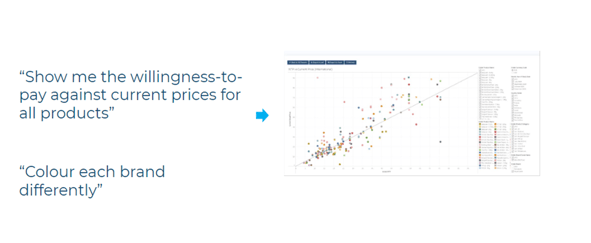Implementing World-Class Revenue Growth Management (RGM) with the OBPPC Framework
 PriceBeam
·
4 minute read
PriceBeam
·
4 minute read
In today’s market, Revenue Growth Management (RGM) has emerged as the cornerstone for companies to maximize profits and revenue. Companies are now integrating the OBPPC framework with RGM.
What is OBPPC
“For each Occasion it defines the optimal Brands, in the appropriate Packages at the right Prices, in the target Channels”.
The OBPPC framework provides a structured approach to Revenue Growth Management, enabling companies to navigate the complexities of the market and drive sustainable growth. Companies can tailor their OBPPC strategies to meet the consumers' needs by understanding the motivations, preferences, and behaviors of the target audience.
Let’s take a deeper look at what OBPPC stands for:
Occasion: What are the different occasions consumers might need your product or service? This requires deep consumer insights to understand the different use cases in which a consumer may purchase your product, whether it is a one-off or frequent purchase.
Brand: emphasizing the importance of aligning product offerings with the brand’s identity and values. This ensures that all products under a brand resonate with the target audience and meet their expectations in terms of quality and experience.
Package: packaging can play a crucial role in attracting customers through the perceived value based on the quality of packaging.
Price: Pricing strategies are fundamental in capturing value, within the OBPPC framework price is used to consider consumers’ willingness to pay, competitive pricing, cost factors, and overall brand positioning.
Channel: The choice of distribution channel must align with where their target audience consumers prefer to shop for different occasions.
.png?width=640&height=320&name=OBPPC%20(1).png)
How to integrate RGM with the OBPPC Framework
Gathering insights
The first step in implementing RGM with an OBPPC framework is gathering and analyzing consumer insights. Understanding your consumer's behavior, preferences, and purchasing patterns is crucial. This knowledge helps identify various occasions, align your brands, optimize packaging, set strategic prices, and select appropriate channels. Leveraging data analytics and market research can uncover valuable insights that form the basis for informed decisions. See PriceBeam, our platform provides companies with invaluable real-time market data using their target market to understand willingness-to-pay of a product.
Brand positioning
Once you understand your consumers, the next step involves aligning your brands and product portfolio with their needs. This means evaluating each brand’s strength, market position, and alignment with consumer occasions. It's about ensuring that each brand in your portfolio serves a specific consumer need or occasion. Portfolio management under the OBPPC framework might involve expanding or contracting your brand offerings based on market demand and strategic fit.
Optimizing packaging for different occasions
Packaging plays a multifaceted role in the OBPPC framework, impacting not just the product's appeal but also its functionality and sustainability. For different occasions, consumers might prefer different package sizes, materials, or designs. For example, a family gathering might call for larger, shareable packaging, while a quick snack on the go might benefit from portable, single-serve packaging. Sustainable packaging options can also appeal to environmentally conscious consumers. Thus, knowing what occasions consumers will purchase is critical for your packaging and can be the deciding factor for purchase.

Strategic Pricing
Pricing is where RGM truly comes to the forefront. Implementing dynamic pricing strategies that reflect the value provided to the consumer, competitive positioning, and the brand’s market status is crucial. This involves understanding price elasticity, competitive pricing structures, and consumer price perceptions. Seasonal pricing, promotional offers, and personalized pricing can also be part of a strategic approach to pricing within the OBPPC framework.
Channel Strategy
The final piece of the puzzle is selecting and optimizing distribution channels. The right channels depend on where your target consumers prefer to shop for different occasions. This might mean focusing on online sales for certain products or doubling down on retail distribution for others. An effective channel strategy considers the nuances of each channel, including the consumer's shopping experience, channel costs, and logistical considerations. Integrating RGM with channel strategy will help companies maximize profits by understanding where their target consumer will shop and being available for them when they are ready to buy.
How to use willingness-to-pay to implement RGM to OBPPC Framework
Depending on the occasion will depend on how much someone is willing to pay for a product. Measuring and understanding those differences can drive optimization. Comparing consumer profiles that are willing to pay different amounts. For example: a new pack concept can drive higher consumer WtP than current packaging in price ranges of $3-$5. Testing new pack options with your target market can help identify areas of increasing profits and revenue. It’s crucial to break down by consumer segment, channel, or geography as segmentation will help understand premium consumers or value buyers.
Segment the market by demographics + Segment by business purpose =
Different packs for different segments + purchases
Example of a Comparative Willingness-to-Pay. 
How to leverage PriceBeam
Successful implementation of RGM with an OBPPC framework relies heavily on technology and data analytics. Advanced analytics can help predict consumer behavior, optimize pricing in real-time, and identify the most profitable channels and packaging options. Investing in market research tools and simulation tools can enable brands to constantly enhance their products to meet the demands of their target market. Our RGM studies provide businesses with a well-rounded and adaptable approach to RGM involving meticulous analysis of market trends, customer behavior, and competitive landscapes, enabling businesses to make informed decisions about pricing strategies, promotional activities, and product offerings. PriceBeam's RGM study places a strong emphasis on leveraging data analytics. The study empowers data-driven decision-making by providing businesses with comprehensive insights into market trends, customer behavior, and performance metrics. This ensures that businesses not only stay informed but also continually refine their strategies for sustained revenue growth.
💻Suggested webinar ➡️Implementing World-class RGM with the OBPPC Framework
Conclusion
Integrating world-class Revenue Growth Management (RGM) with the OBPPC framework involves constantly analyzing and optimizing through market research to ensure that products are effectively positioned to meet consumer needs across different occasions, maximize brand equity, offer competitive pricing, utilize packaging that enhances product value, and are available in the most effective channels for reaching the target audience. This holistic approach enables companies to drive growth and profitability in a competitive marketplace.
Book a call with one of our experts to see how our insights can help you with RGM ⬇️
.png?width=400&height=100&name=PBLogoTransparent%20(1).png)





